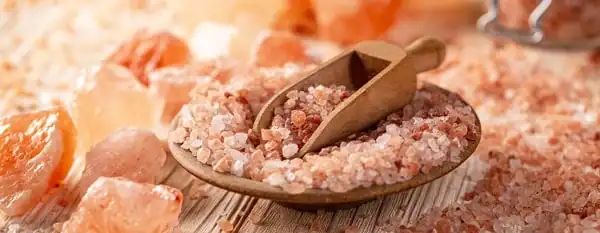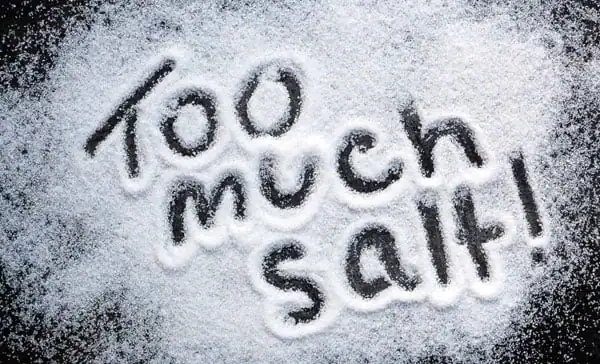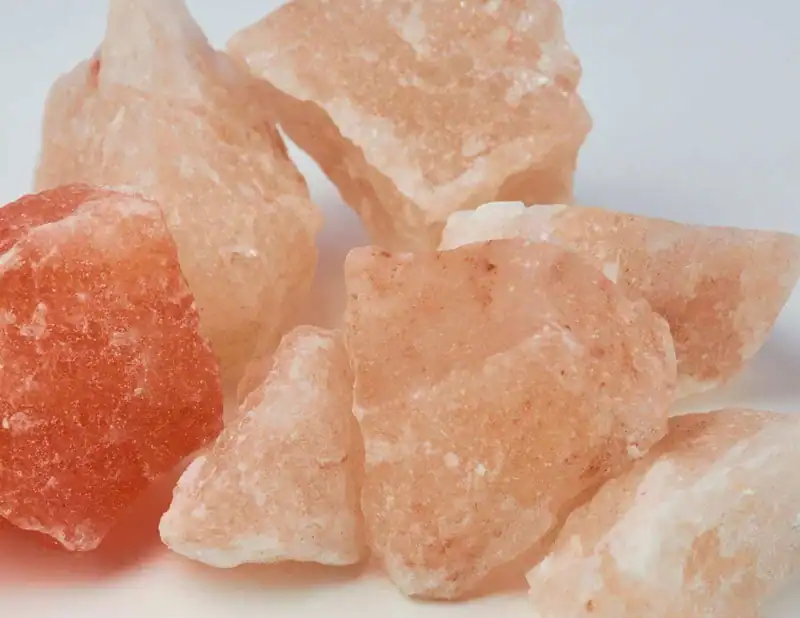Himalayan salt has become increasingly popular in recent years as a possible healthier alternative to regular table salt. Often hailed for its unique mineral content and supposed health benefits, this pink-hued salt is widely used in cooking, as a seasoning, and even in spa treatments and air purifiers.
But can Himalayan pink salt truly live up to its reputation as a magical ingredient? In this article, let’s take a deeper dive into the potential health advantages and any possible adverse side effects of consuming Himalayan salt.
What Are The Potential Benefits Of Himalayan Salt?
Himalayan salt is often touted for its unique mineral content, which is said to offer a range of health benefits. Some of the most commonly claimed benefits of consuming Himalayan pink salt include:
- Improved Respiratory Function – Himalayan salt has been thought to clear the airways and alleviate symptoms of illnesses such as asthma and bronchitis. The said health benefits can be attributed to its ability to break down mucus in the lungs, thus enabling easier coughing up. Note that this benefit is thought to be derived from breathing air that contains microscopic particles of salt – not from ingesting the salt. We have a number of articles about this practice, but a good starting point might be Halotherapy: Revealing Its Health Benefits and Uses, to start learning about Salt rooms or Salt inhalers – two different forms of Halotherapy.
- Improved Mineral Balance in the Body – With its rich array of minerals like calcium, magnesium, and potassium, Himalayan salt stands out for its potential to fortify the body’s natural functions. Not only that but these trace elements are also believed to be more quickly absorbed than other salts when consumed in this form.
- Better Hydration – Himalayan salt has been touted to be beneficial for the body, as it helps with improved hydration and better overall health due to its ability to promote more efficient water absorption.
- Better Sleep – Himalayan salt has been suggested for restoring equilibrium within your body’s pH levels, that proponents say lead to more restful sleep.
It’s critical to remember that, while many of these advantages have been widely suggested, there is no scientific proof behind them. Procuring a suitable amount of minerals can be vital for your overall health and well-being, so Himalayan salt may have a place in your diet, especially if you are replacing some other type of salt rather than adding more sodium to your diet. To learn more about the trace minerals in this salt, including some data about how much of each one, see Minerals In Himalayan Salt: Let’s See What’s In There.
As with any nutrient or supplement regimen, it is always recommended to consult a healthcare professional before making any modifications to your diet plan or supplementation routine.

What Are The Potential Side-Effects Of Himalayan Salt?
Despite the health claims surrounding Himalayan salt, it is critical to understand its possible side effects. To ensure you make an informed decision, here are some of the most reported reactions associated with snacking on this delicacy:
- High Blood Pressure – Culinary salt is a source of sodium, which can interfere with your blood pressure. Excessive consumption of salt may put individuals in danger of hypertension and eventually heart disease or stroke. Himalayan salt is no exception to this rule, and tends to have a similar amount of sodium (by weight) to common table salt.
- Increased Risk of Kidney Problems – Himalayan salt and table salt may seem different, however, they share at least one trait: consuming too much can be taxing on the kidneys. Excessive sodium intake leads to your body retaining water which then raises blood pressure and harms the kidneys in the long run.
- Stomach Upset – It is possible that some people may experience digestive distress when consuming Himalayan salt due to the high mineral content that can lead to inflammation of the stomach lining. This is not common, however.
- Allergic Reactions – In rare cases, Himalayan salt may cause an allergic reaction in some individuals, manifesting as a rash, hives, or other signs of discomfort. Discontinue use if you experience any of these reactions and seek medical advise if needed.
Before introducing any type of salt to your diet or supplement regimen, it is always wise to have a chat with a healthcare professional. Especially if you are taking medications that may interact negatively with sodium.
Additionally, be aware of how much sodium should be consumed each day and check nutrition labels carefully when measuring a type of salt that is new to your diet. Different salt can have more or less sodium than others, mostly due to how dense each one is. To understand how much sodium is in a teaspoon, be sure to see our article Salt Comparison Guide: Salt Sodium Content, especially when cooking and preserving foods with salt.
Are There Any Health Conditions That are Worsened by Eating Himalayan Salt?
Himalayan salt should always be consumed in moderation, as too much of it can lead to high blood pressure which may worsen underlying health issues such as hypertension, heart disease, and stroke. This is true of any culinary salt.
If you have any underlying health conditions, monitoring or even reducing your sodium intake is highly recommended. For those who are struggling with digestive issues such as acid reflux or stomach ulcers, it is best to avoid Himalayan salt due to its high mineral content; this could potentially worsen their symptoms.
Before making changes to your dietary habits and supplement routine, be sure to contact a healthcare professional for their opinion on what would suit you best according to your personal medical history and nutritional needs.
How Much Himalayan Salt Is Too Much?
According to dietary guidelines, adults should consume no more than 2,300 milligrams (mg) of sodium per day. However, certain individuals such as those older and with hypertension or chronic kidney disease are advised to limit their intake even further to 1,500 mg daily. Once again, this refers to any culinary salt, not just Himalayan salt. If you’d like to learn more about daily salt consumption, there is an excellent resource at the U.S. Centers for Disease Control site.
Unfortunately for these groups that seek a healthier alternative to table salt. Himalayan salt is similarly high in sodium. If you’d like to learn more about different types of salt and how they compare between sodium content and volume (measuring by teaspoon vs. measuring by weight in milligrams – ‘mg’) be sure to see the Salt Comparison Guide: Salt Sodium Content.
For those that eat a lot of processed foods, much of the dietary sodium in a day comes from those items – chips, crackers, packaged cookies, cheese, frozen pizzas, and many more convenience items contain a lot of sodium. If you are preparing your own meals from ‘whole foods’: fresh veggies, raw meats or seafood, grains, etc., you have a whole lot more control over how much sodium goes in.
I’ve started using a lot less salt when preparing food, but then get my salty goodness by sprinkling just a very small amount of salt on the top of the dish when eating it. Salts like Himalayan salt, Maldon Sea salt crystals or other crystallized sea salts are terrific for this purpose. Through careful preparation and use of salt, you can reduce your sodium intake while still getting the enjoyment and flavor enhancing qualities of culinary salt. To learn about different types of culinary salt, be sure to see our article Worth It’s Salt: 20 Different Types of Salt.
If you are unsure about how to add Himalayan salt into your diet, it’s wise to consult with an experienced healthcare provider.

What is the Debate Surrounding the Health Benefits of Himalayan Salt?
Determining if Himalayan salt is healthier than table salt has sparked a heated debate. While some experts hold that this type of salt provides additional benefits such as enhanced respiratory functioning, improved mineral balance throughout the body, and higher hydration levels, it’s unclear if these results are concrete or perceived.
Proponents of this salt point to the fact that the salt deposits were formed many of thousands of years before the earth and oceans became exposed to pollution, man-made chemicals and micro-plastics. They like having access to this salt supply that they feel is more natural and pollution-free than some other sources of salt.
Whatever conclusion you come to about the health advantages associated with using Himalayan salt, one thing remains certain, further research needs to be conducted before any definitive conclusions can be made.
Final Thoughts
Ultimately, Himalayan salt is gaining recognition as a possibly healthier substitute for conventional table salt because of its one-of-a-kind mineral content and natural sourcing from deposits that were formed before pollution and micro-plastics became an issue in our food supply.
The scientific proof for Himalayan salt’s advantages over common table salt is inconclusive. However, Himalayan salt is a special and flavorful ingredient for cooking or seasoning, and an substitute for common salt with a similar amount of sodium.







